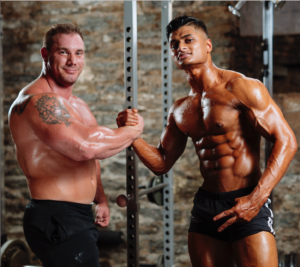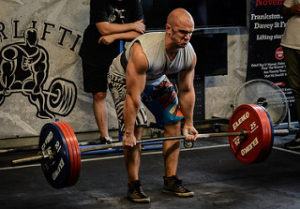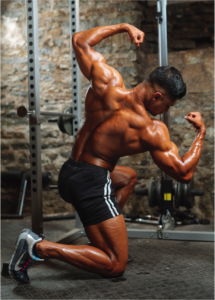I headed down to the Cincinnati Meat Locker (the most badass gym you’ve never heard of) for a photoshoot this past weekend and bumped into the owner of the gym, Kyle Brown, an avid powerlifter. Kyle and I got to talking about the strained relationship between bodybuilders and powerlifters. Many strength athletes criticize bodybuilders for being unathletic, narcissistic, beauty pageant contestants, and many bodybuilders criticize powerlifters as being fat, lazy trainees who lack the discipline to follow sound dieting methodologies.
The fact of the matter is that these two populations actually have quite a bit that they can learn from one another. An athlete that is primarily interested in increasing strength will need to apply hypertrophy training methods in order to yield optimal results. Similarly, an athlete seeking to build muscle and burn fat will need to apply strength training methods in order to sculpt that dream physique.
This seems to be a bit counterintuitive due to the fact that bodybuilders and powerlifters seem to use completely opposite strategies with regards to how they train! Powerlifters are pretty much looking for the easiest possible way to move as much weight as possible, whereas physique athletes are looking for the most difficult way to move that same weight so that they can activate their muscles throughout the course of a training session.
So, how can the two camps learn from each other?

Hypertrophy Training for Powerlifters
Even if you are a powerlifter, and your primary goal is to increase your strength, you still need to utilize hypertrophy training appropriately in your workouts in order to maximize your potential. If you exclusively focus on the amount of weight that is on the bar, without ever giving any consideration to the effect that the weight is having upon the involved muscle groups, you may be limiting yourself.
In order to maximize strength, a trainee needs to attend to two different adaptations:
- Making the muscle fibers thicker
- Creating a stimulus that requires the motor cortex to learn how to optimally fire muscles in order to move heavy weight
In plain English, if you neglect either of these two components, you’re missing out on a lot!

Strength Training for Physique Athletes
Many bodybuilders will make the exact opposite mistake. They will exclusively place their focus on fatiguing a particular muscle without paying any attention to the amount of weight that is leveraged in order to create that fatigue. This is certainly something that I was guilty of early in my bodybuilding career. I focused so heavily upon “feeling my muscles” pump out repetition after repetition, that I was never able to optimize my muscular recruitment.
There is one simple concept that I want all physique athletes to walk away with after reading this article.
You cannot induce hypertrophy without muscular recruitment.
Recruitment, of course, requires that a trainee utilize progressive overload in a meaningful way. Yes, I get it, “feeling the exercise” and developing a mind-muscle connection is certainly important (I touch on this here), but the fact of the matter is that you cannot provide your muscles with optimal stimuli for growth if you completely ignore progressive overload.

Integrating This All
Obviously, we would all enjoy looking AND performing like beasts. We don’t want to have to choose between one or the other, but oftentimes, many trainees feel like they have to. There are negative consequences for those who seek to be a jack of multiple trades, right? Wrong.
In order to demonstrate true physical excellence, a trainee needs to become a jack of at least two trades – strength and hypertrophy training (and there are several more disciplines that can drive progress on top of these two).
Here, I think it is important to consider the fact that any time that you lift a weight, you are creating the stimulus for both increased strength and increased muscle development. It’s never just one or the other. That being said, it is certainly important to recognize that you can emphasize one adaptation over the other based on the principles and methodologies that you employ in how you lift that weight. There is definitely a balance to be struck in your programming around how you leverage the training strategies of both powerlifters and bodybuilders.
But do not ever think that you have to be weak if you’re seeking physical development. Do not ever think that you have to be fat in order to be strong.
Here’s the bottom line. Don’t be an asshole to a trainee just because their primary goals are different from yours. If anything, when you look at a different type of trainee, it should spark your curiosity. It should cause you to ask yourself what you can learn from this person’s programming, how their training principles can help you to reach your personal goals!
I can personally tell you that, as an NPC bodybuilder, I have attended many powerlifting seminars and trained with numerous powerlifters in order to fortify my strength training knowledge. I have connected with endurance athletes (marathon runners, cyclists, etc.) in order to learn how to increase my cardiovascular strength. And I have even attended ballet classes in order to better learn how to develop a flow around how I pose onstage.
Training with specificity is important, but there is a degree of hybridization is necessary to take your results to the next level. Strike the balance.
Bang bang.




